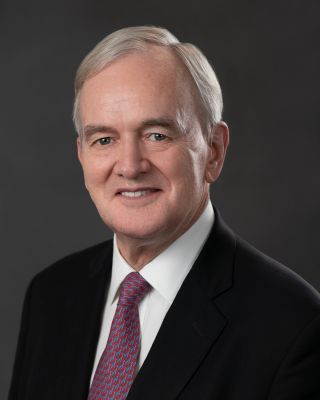NEW YORK — When a market liquidity and/or funding liquidity crisis occurs at a moment when inflation is above-target, tension between the objectives of central banks, price stability and financial stability, is inevitable. In such cases, I believe that financial stability must come first, because it is a precondition for the effective pursuit of price stability.
But this does not mean that the central bank should cease or suspend its anti-inflationary policies when threatened with a banking crisis or similar systemic stability risk. The conflict between the objectives of price stability and financial stability should be manageable by using the central bank’s policy rate to target inflation, and by using the size and composition of its balance sheet as a macroprudential policy tool to target financial stability. Credible communication is essential to achieve both objectives.
Financial stability in a large advanced economy is not materially impacted by a 50-basis-point increase in the risk-free short nominal rate of interest. It is impacted by the interrelated liquidity and credit risk premia and the vanishing would-be purchasers and lenders in illiquid financial markets, when credit rationing rules the roost. The Bank of England (BoE) got this right last year when, during a period of monetary-policy tightening brought on by then-Prime Minister Liz Truss’s incoherent policies, it engaged in temporary purchases of long-dated UK government bonds and postponed quantitative tightening through Asset Purchase Facility gilt sales.
The asset purchases, which lasted from September 28 until October 14, were needed to counter material dysfunctionality in the longer-dated gilt markets. At its first Monetary Policy Committee meeting following the purchases, on November 3, the BoE signalled its continued commitment to the inflation target by raising the policy rate by 75 bps, from 2.25 per cent to 3 per cent. Two further 50 bps rate hikes followed on December 15 and February 2. The prudential nature of its temporary asset purchases would have been even clearer if they had been sterilised.
The European Central Bank (ECB) also got it right this month when it raised its policy rates by 50 bps, despite the financial kerfuffle that had blown over from the United States following the insolvency of Silicon Valley Bank (SVB). Headline HICP (Harmonised Index of Consumer Prices) inflation in February was 8.5 per cent, with the core HICP inflation rate (which strips out volatile energy and food prices) at 5.6 per cent. The ECB addressed the financial-stability concerns by stating that its “policy toolkit is fully equipped to provide liquidity support to the euro area financial system if needed and to preserve the smooth transmission of monetary policy”. Moreover, “the Transmission Protection Instrument is available to counter unwarranted, disorderly market dynamics that pose a serious threat to the transmission of monetary policy across all euro area countries”.
What will the Federal Reserve do at its upcoming meeting? I believe that the financial stability concerns following the demise of SVB and Signature Bank were addressed effectively by ensuring that all deposits in these two badly managed institutions would be made whole. De facto, this means that all deposits in US banks are henceforth insured. This no doubt contributes to moral hazard, because incompetent or reckless bank management will not be punished through a loss of informed depositors. But it is the unavoidable price of ruling out the systemic threat posed by bank runs. Moral hazard was contained by letting the banks go bust and exposing the shareholders and unsecured creditors (and presumably even secured creditors if the losses are large enough) to whatever the banks’ mismanagement cost.
But this prudential response was not optimal, because the new Bank Term Funding Programme created by the Fed, which offers one-year loans to banks with the collateral valued at par, should have been made available only on penalty terms. With market value well below par for many eligible debt instruments, the lender of last resort has become the lender of first resort, offering materially subsidised loans. The same anomaly (valuing collateral at par) now applies to loans at the discount window.
At the end of 2022, US banks had about $620 billion of unrealised losses on securities they planned to hold to maturity. Raising the policy rate will most likely further depress the market value of long-duration securities. So be it. We do not know how much of this duration risk was hedged by the banks (and who the counterparties to such hedging are). But we do know that bank losses (in orderly markets) due to mistaken investment decisions are part of the healthy Darwinian mechanism that sustains a market economy, as is the orderly resolution of bankrupt institutions. The central bank must be ready, as lender of last resort and market maker of last resort, to discharge its financial-stability responsibilities should illiquidity, bank runs, or other market failures pose a systemic threat.
With core personal-consumption-expenditures inflation still at 4.7 per cent in January, the Fed should raise its policy rate target zone by 50 bps at its upcoming meeting. But I fear it may stop at 25 bps, owing to an erroneous concern about the financial stability implications of a larger rate hike. Financial stability in the US is best served in the short run by the Fed standing ready to intervene as lender and market maker of last resort. In the medium and long run, the original Dodd-Frank regulations, repealed for small and medium-sized banks in 2018, should be reimposed, and perhaps limits on banks’ proprietary investment activities should be restored, or maybe fractional reserve banking should be abandoned altogether. More assertive and competent supervision wouldn’t hurt, either.
Willem H. Buiter, a former chief economist at Citibank and former member of the Monetary Policy Committee of the Bank of England, is an independent economic adviser. Copyright: Project Syndicate, 2023. www.project-syndicate.org
